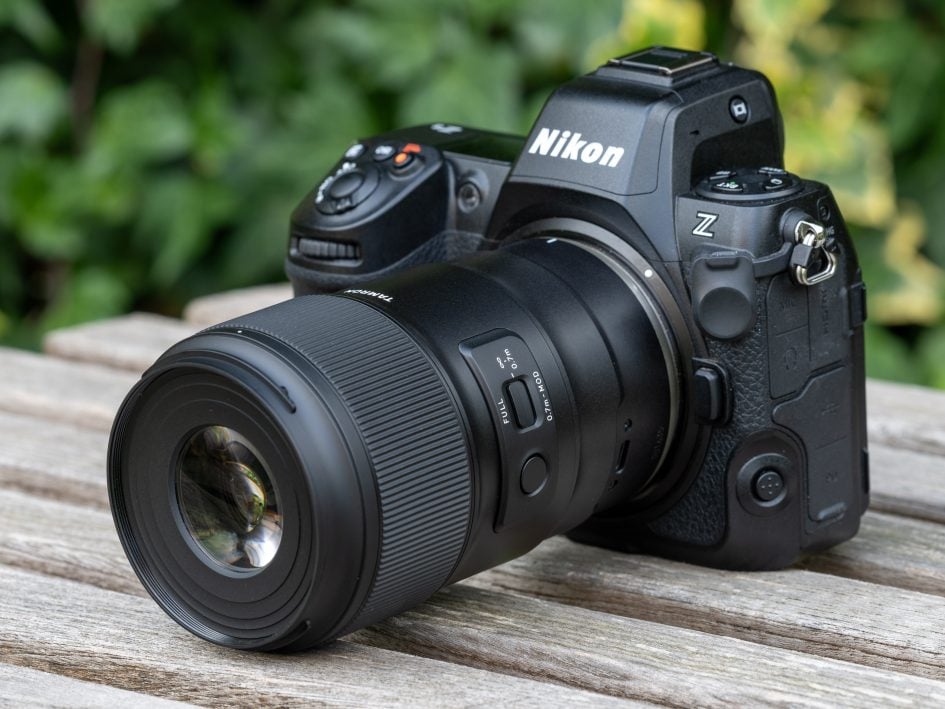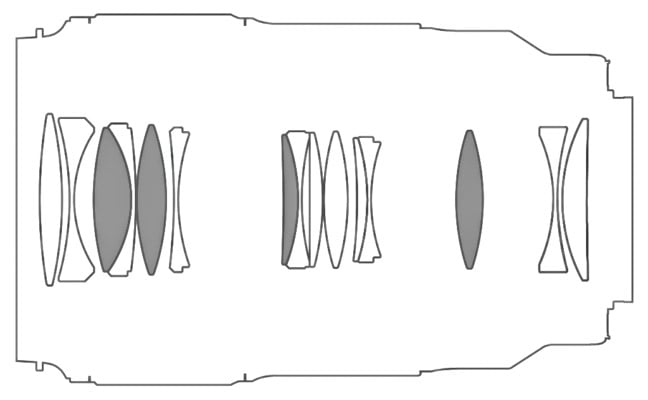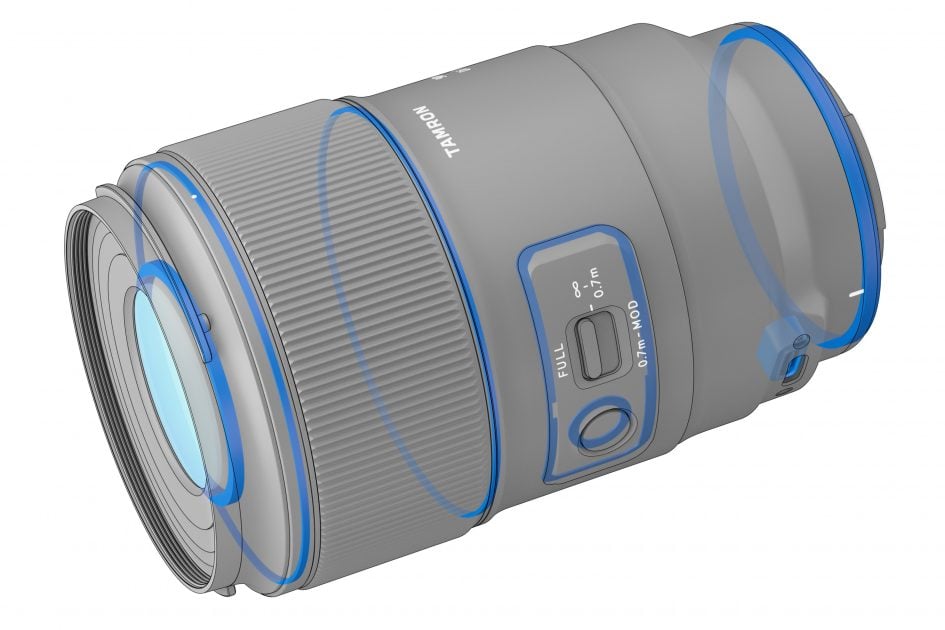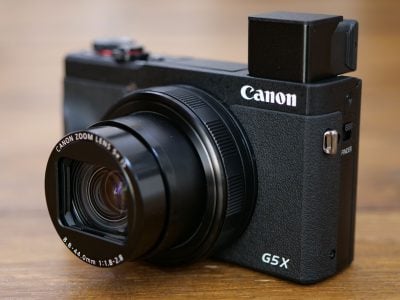Tamron 90mm f2.8 Di III Macro review
-
-
Written by Thomas
Intro
The Tamron 90mm f2.8 Di III Macro VXD (Model F072) is a 1:1 macro lens for Sony E-mount and Nikon Z-mount. It is the successor to Tamron’s SP 90mm f2.8 Di VC USD Macro from 2016 for DSLRs. Macro lenses with focal length around 100mm are popular for macro photography and general-purpose use as they offer more working distance than shorter focal lengths. This makes it easier to light your subject and less likely for small critters to shy away. 90mm is also a nice focal length for portraiture. Tamron’s new lens has no optical image stabilization but relies instead on the in-body image stabilization of Sony’s and Nikon’s mirrorless cameras. The lens is made in China and costs 699 EUR / 699 USD / 599 GBP which is cheaper than the alternatives from Nikon and Sony.
Facts and features
Let’s compare Tamron’s 90mm f2.8 Di III Macro (“Tamron” for short) to the Nikon Z MC 105mm f2.8 VR S (“Nikon”) and the Sony FE 90mm f2.8 Macro G OSS (“Sony”). As usual I’ve rated the features with a [+] (or [++]), when it’s better than average or even state of the art, a [0] if it’s standard or just average, and [-] if there’s a disadvantage.
Size (diameter x length): 79 x 129mm (3.1 x 5.1in.) for the Nikon Z version, the Sony version is 2mm shorter. The lens hood adds 68mm (97mm diameter). The Nikon is 85 x 140mm + 63mm lens hood, the Sony is 79 x 131mm + 51mm lens hood. [+]
Weight: 640g (22.6 oz.) for the Nikon Z version, the Sony version is 10g lighter. The plastic lens hood adds 63g. The Nikon is 622g + 67g lens hood, the Sony is 602g + 43g lens hood. [0]
Optics: 15 elements in 12 groups including 4 special dispersion element. The optical formula of the Sony and Nikon is of similar complexity but employs an aspherical element. [+]
Minimum object distance is 0.23m (0.75ft.) which results in a very short working distance of 9cm and a maximum magnification of 1:1. A magnification of 1:10 is achieved at 1.01m object distance. Sony’s MOD is 0.28m which results in a slightly larger working distance of 13cm – similar to the Nikon. [+]
Image stabilization: The Tamron has no optical stabilization. But Sony’s and Nikon’s full-frame cameras provide built-in sensor-shift stabilization. Both alternatives from Sony and Nikon offer optical image stabilization. [0]
Filter-thread: Tamron has standardized on 67mm filters across almost all of its mirrorless lenses. Which results in a nice cost saving when buying high-quality filters for multiple lenses. No other manufacturer does it with the same consistency. Both Sony and Nikon lenses need 62mm filters. [++]
Autofocus: All lenses in this comparison offer autofocus with built-in focus drive. Manual-focus override is by simply turning the dedicated focus ring. The focus ring has the usual variable gearing which allows for very precise manual focus when turned slowly. The Tamron and Nikon focus ring direction and gearing are configurable, the Sony switches to linear gearing in MF. The Tamron supports camera key functions like (Fast-)Hybrid AF, eye detection etc. [+]
Aperture ring: No, but the focus ring can be configured to operate the aperture. The Sony has a dedicated aperture ring, the Nikon has a control ring which can be assigned to operate the aperture (which is the default), exposure compensation, or ISO sensitivity – or simply switched off. [+]
Aperture: The Tamron has 12 circular aperture blades which results in sun stars with 12 rays when stopped down. The Sony and Nikon have 9 aperture blades resulting in sun stars with 18 rays. The effective focal ratio of the lens is reduced by 2 stops from f2.8 at infinity to f5.6 at 1:1 magnification. The Nikon loses 1.3 stops (to f4.5) at 1:1 magnification, and Nikon Z cameras display the effective aperture. On Sony mirrorless cameras the F-numbers are displayed at their nominal value – i.e. f2.8 stays f2.8 regardless of focusing distance. [+]
Additional control elements: The Tamron has a focus limiter switch (MOD-0.7m/0.7m-infinity/full) plus a focus set button to which various functions from the camera or Tamron’s Lens Utility (TLU) can be assigned. There’s a USB-C port on the lens to connect it to a computer. The Nikon has a focus limiter, a button for assignable lens functions, AF/MF switch and a display indicating (effective) aperture or focusing distance (in m or ft.) and depth-of-field, or magnification. The Sony also has a lens function button, focus limiter, and AF/MF switch, plus a switch for optical stabilization. [+]
Lens profile: All lenses in this comparison come with a lens profile for vignette control, diffraction compensation, and distortion control. [+]
All three lenses cover full frame/FX or smaller sensors. On cameras with an APS-C / DX sensor the angle of view of the Tamron ( and Sony) becomes equivalent to a 135mm lens on a full-frame camera. [+]
Price: 699 EUR (incl. 19% VAT) / 699 USD / 599 GBP. The Nikon Z MC 105mm f2.8 VR S currently sells for 800 EUR / 850 USD / 760 GBP after rebates. The Sony FE 90mm f2.8 Macro G OSS was at 880 EUR / 1000 USD / 720 GBP at the time of writing. [+]
The Tamron comes without a pouch but the lens hood is included and reversible for transport. It has a sliding window to make it easy to rotate filters. [0]
Sealing: All three lenses in this comparison have a rubber grommet at the lens-mount plus further special weather-sealing throughout the construction. [+]
Tamron’s new 90mm f2.8 Di III Macro turns out to be well featured with a score of 0[-]/3[0]/13[+]: The lens is pretty compact, can be configured widely with Tamron’s lens utility, is well protected against the elements and is cheaper than the Nikon Z MC 105mm f2.8 VR S or Sony FE 90mm f2.8 Macro G OSS. Its major deficiency is the lack of an optical image stabilization – but this may be a moot point with todays in-body stabilization and a widespread use of tripods in macro photography. This makes Tamron’s new macro lens an interesting alternative to the respective lenses from Nikon and Sony.
Two macro lenses with Z-mount
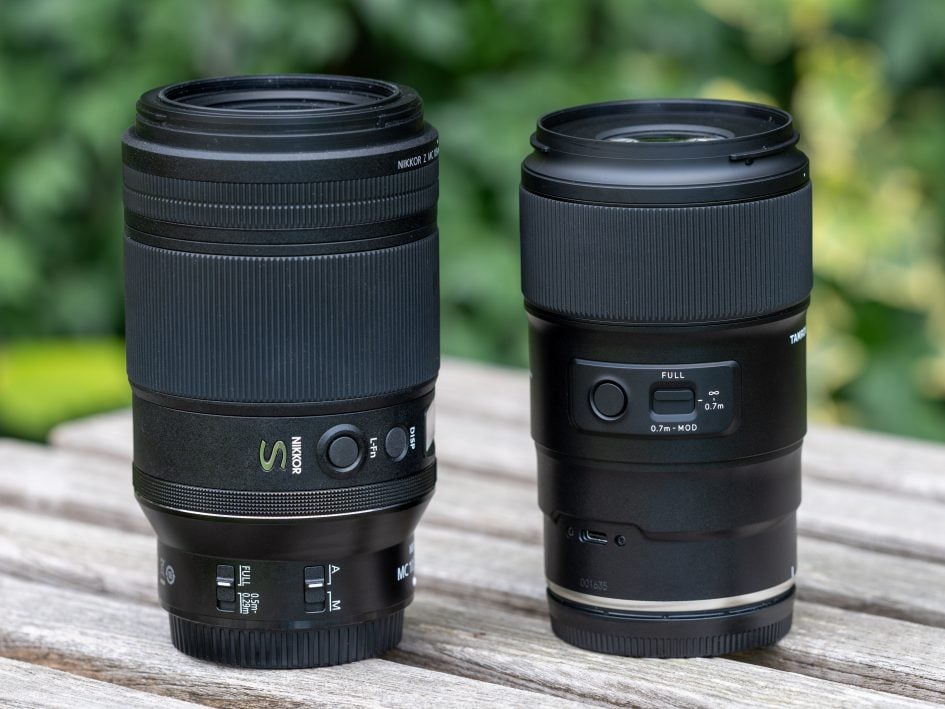
Above: Nikon Z MC 105mm f2.8 VR S, Tamron 90mm f2.8 Di III macro
Focus
Focus accuracy and repeatability is critical to consistently produce sharp shots. Repeatability (the accuracy of focus on the same subject after repeated focus-acquisition) of the Tamron 90mm f2.8 Di III Macro seems to be good and I experienced no outlier over my series of test-shots. Unfortunately Reikan FoCal was not available to me for more quantitative measurements. On a Nikon Z8 the lens focuses in around 0.35 sec from infinity to 1m (1:10 magnification), which is very fast. Both the Nikon and the Sony are slower to focus.
The focus ring is 31mm wide. Its rubber surface is structured for better grip and can be operated with one finger. AF-operation of the lens in photo-mode makes some low clunking sound but if you record video with the built-in microphone AF is completely silent. As Tamron’s AF drive is voice-coil driven (dubbed VXD) the focus group is not locked in place when the camera is switched off. This leads to noises from inside the lens when you shake it but Tamron assured me that there is no risk of internal damage.
As you pull focus, you’ll notice some focus breathing: the image became 5% more magnified when I adjusted focus from infinity to 1m. This could be distracting when shooting videos but is less focus breathing than the 8% of the Nikon and -9% of the Sony.
Next check out my quality results!
Check prices on the Tamron 90mm f2.8 Di III Macro VXD at B&H, Adorama, WEX UK or Calumet.de. Alternatively get yourself a copy of my In Camera book, an official Cameralabs T-shirt or mug, or treat me to a coffee! Thanks!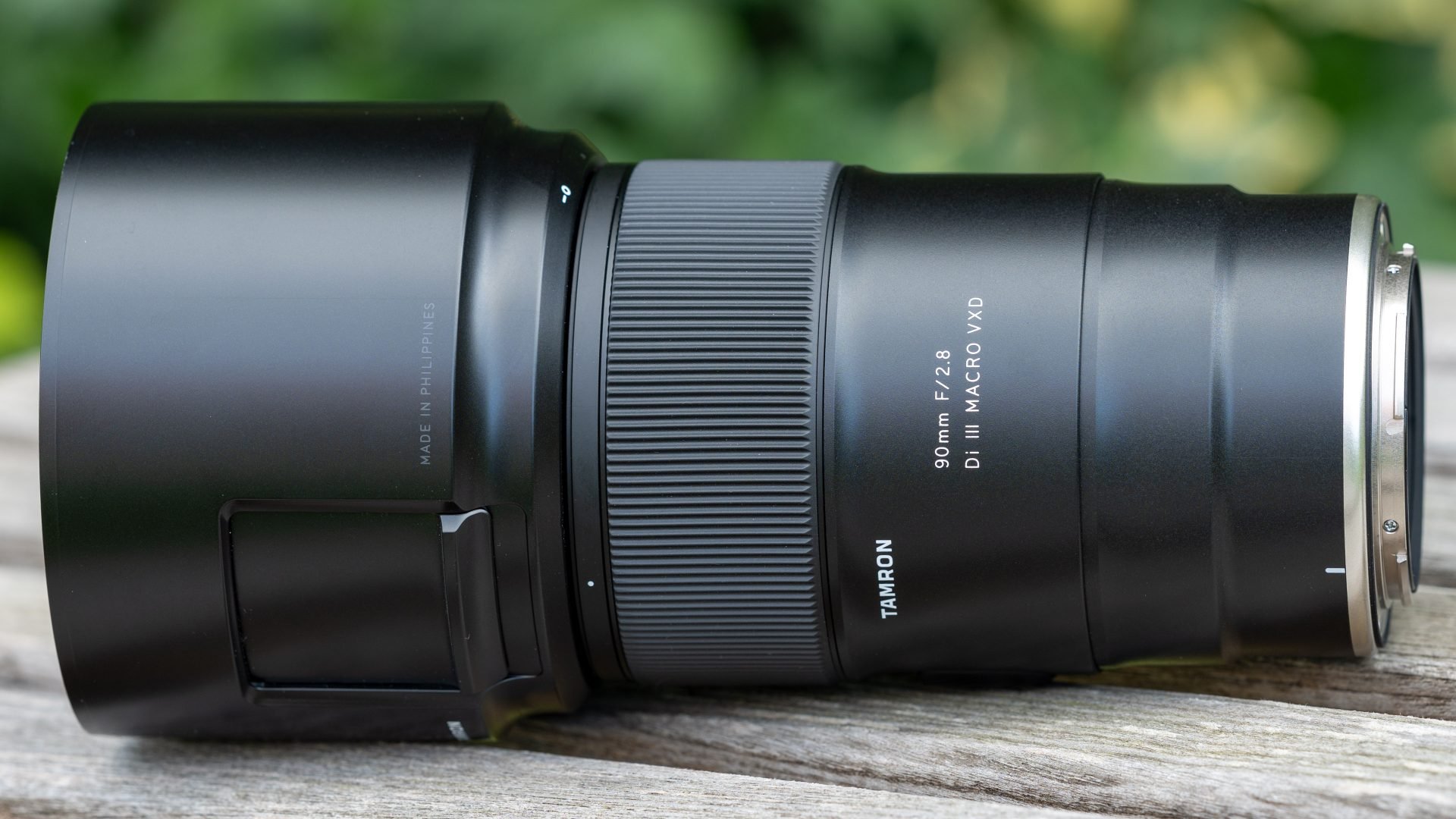
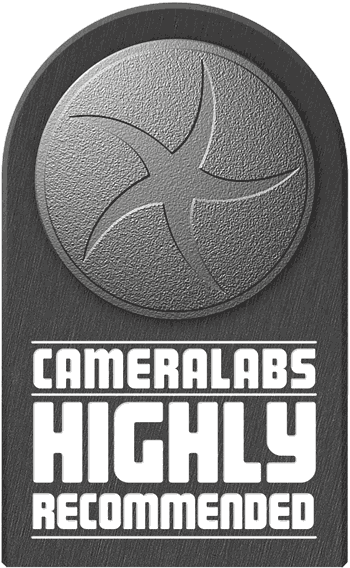 With their 90mm f2.8 Di III macro Tamron finally offers a lens capable of 1:1 magnification for mirrorless cameras from Sony and Nikon. It shows very good resolution at any distances with the FX/FF-corners only a bit softer. Color aberrations and coma are well controlled and there's no discernible field-curvature. The lens is fully weather sealed and has a focus limiter, focus set button, and its lens hood has a sliding window. Only a separate aperture/lens control ring is missing and the lens has no optical image stabilization - but this may be a moot point with todays in-body stabilization and a widespread use of tripods in macro photography. All in all the Tamron 90mm f2.8 Di III macro clearly earns a Highly Recommended.
With their 90mm f2.8 Di III macro Tamron finally offers a lens capable of 1:1 magnification for mirrorless cameras from Sony and Nikon. It shows very good resolution at any distances with the FX/FF-corners only a bit softer. Color aberrations and coma are well controlled and there's no discernible field-curvature. The lens is fully weather sealed and has a focus limiter, focus set button, and its lens hood has a sliding window. Only a separate aperture/lens control ring is missing and the lens has no optical image stabilization - but this may be a moot point with todays in-body stabilization and a widespread use of tripods in macro photography. All in all the Tamron 90mm f2.8 Di III macro clearly earns a Highly Recommended.